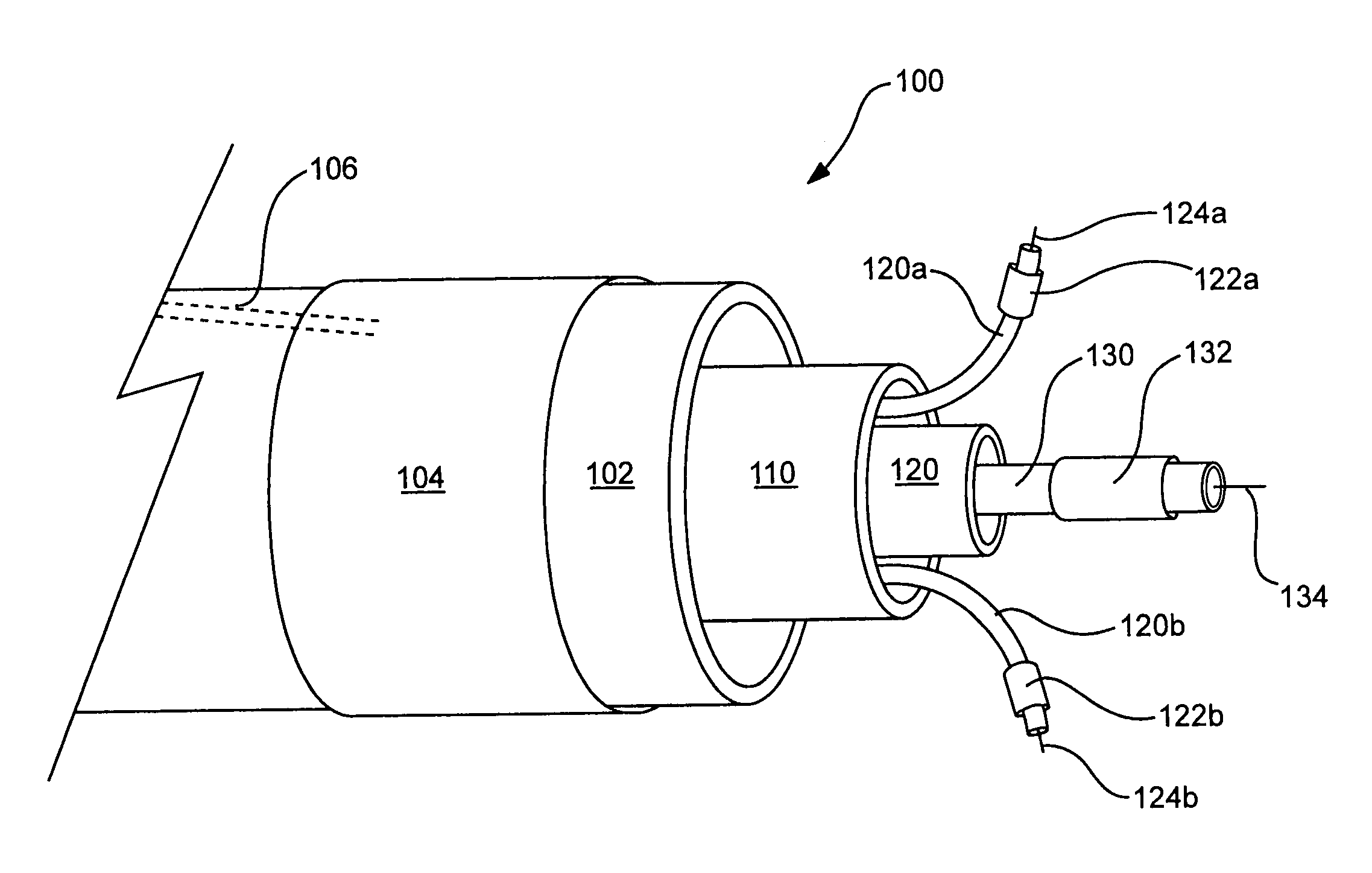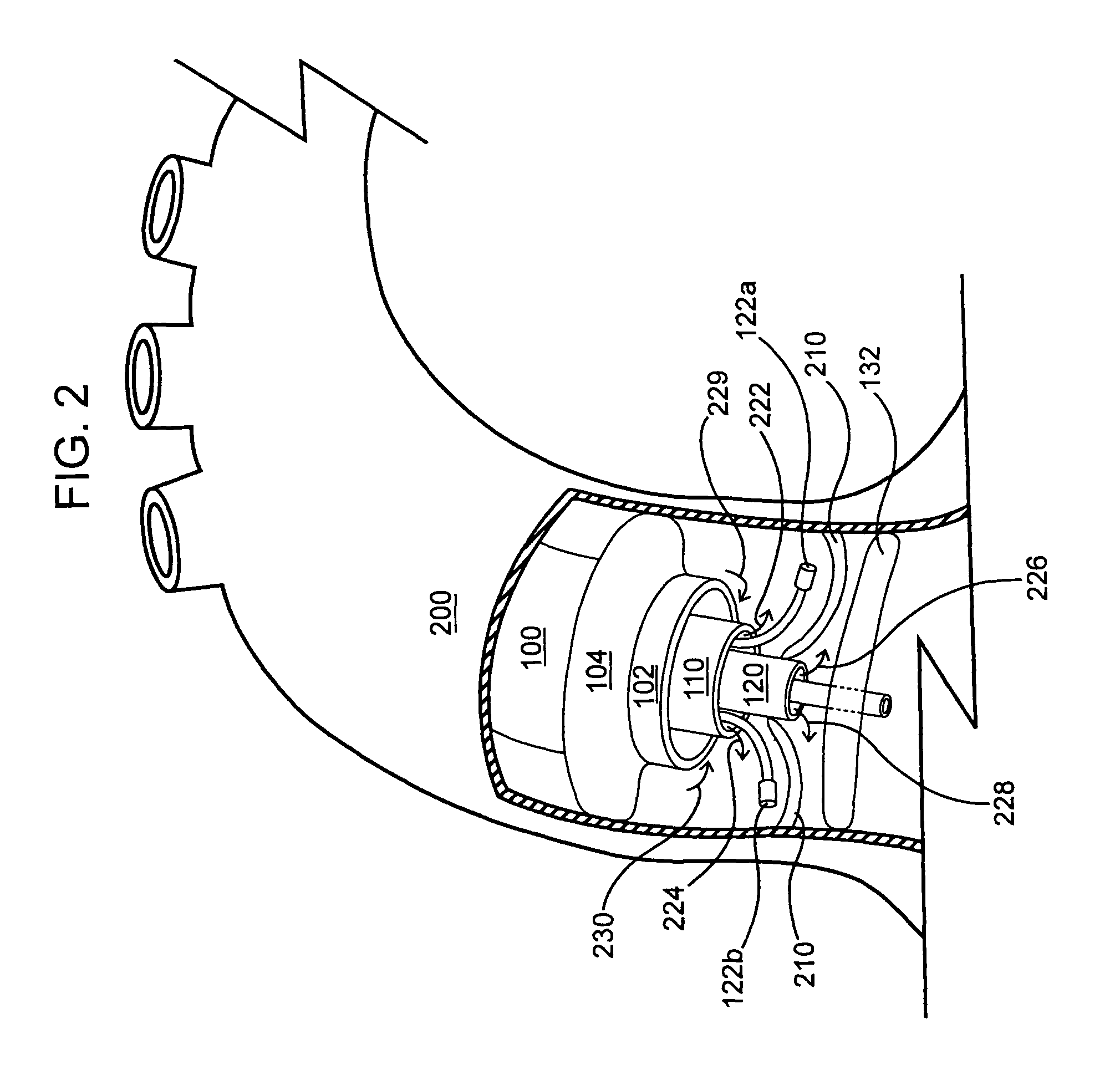Devices and methods for treating aortic valve stenosis
a technology for aortic valves and valves, applied in the field of aortic valve stenosis, can solve the problems of reducing cardiac output, affecting the treatment effect, so as to increase the flow of the treated valve and increase the flow of the aortic valve of the stenotic aortic valv
- Summary
- Abstract
- Description
- Claims
- Application Information
AI Technical Summary
Benefits of technology
Problems solved by technology
Method used
Image
Examples
specific embodiment
Representative Specific Embodiment
[0039]A representative embodiment of the subject devices is depicted in FIGS. 1 and 2. FIG. 1 provides a view of a device according to the subject invention prior to deployment. Device 100 includes fluid removal or aspiration tube 102. Aspiration element or tube 102 has an outer diameter ranging from about 3 mm to about 14 mm, usually from about 5 mm to about 9 mm; and an inner diameter ranging from about 2.75 mm to about 13.5 mm, usually from about 4 mm to about 8 mm.
[0040]Positioned on the outer surface of aspiration element 100 is the ascending aorta occlusion balloon 104 which is inflated and deflated by means of inflation lumen 106. Concentrically and slidably positioned inside of aspiration element 102 is first fluid delivery element 110, which serves to introduce a dissolution fluid to the isolated aortic valve during use. The volume to which balloon element 104 should be expandable is sufficient to occlude the ascending aorta upon deployment...
PUM
 Login to View More
Login to View More Abstract
Description
Claims
Application Information
 Login to View More
Login to View More - R&D
- Intellectual Property
- Life Sciences
- Materials
- Tech Scout
- Unparalleled Data Quality
- Higher Quality Content
- 60% Fewer Hallucinations
Browse by: Latest US Patents, China's latest patents, Technical Efficacy Thesaurus, Application Domain, Technology Topic, Popular Technical Reports.
© 2025 PatSnap. All rights reserved.Legal|Privacy policy|Modern Slavery Act Transparency Statement|Sitemap|About US| Contact US: help@patsnap.com



